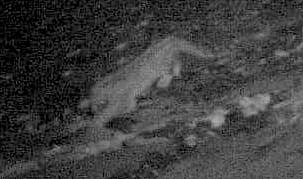Sperm whales to the south, sperm whales to the north. Not a lot in between yesterday (Friday).
![]()
I joined the University of the Azores again to look for baleen whales. The lookouts had only seen sperm whales to the south of Faial when we left the harbour. Since there was no lookout in the north, we went to search the area which wasn’t covered by a lookout. We spotted the first turtle of the day about 3 miles offshore and then found a mixed group of common and striped dolphin. They were not interested in the boat, so we kept going. Shortly afterwards, we spotted our second turtle of the day. This was a fairly large turtle and Rui decided to launch the drone to get some overhead photos. There is a project planned to have an unmanned aerial drone surveying the waters around the island for wildlife. But before that can happen, they need to write some algorithms to decipher the footage they will get. The photo of the turtle was only taken from 15 m height and it is tiny!

Unfortunately, during the flight one of the engines malfunctioned, so the drone couldn’t be used again during the trip. We kept heading to the NW of the islands, until the lookout on the north called to say he was on duty and and had spotted sperm whales closer to the coast and couldn’t see anything else, despite good visibility. So we headed in to get some photo-ID of the sperm whales on our way to the south coast. The vigia directed us to a group of three and then spotted a big blow about two miles further out. It turned out to be a male sperm whale and it didn’t wait for us to get in position to get a fluke photo. So we turned towards the south once again, but ran into sperm whales once more! A group of two, then a juvenile and another single all within a mile. So after another three flukes, we finally made it to the south coast, only to find that the wind had slightly changed and increased, making it impossible to do any work. So we had to call it a day. On the way home, we came across another tw loggerhead turtles. Still smiles for me, because although we weren’t actually looking for sperm whales, we found them once again and managed to get five ID photos.




















